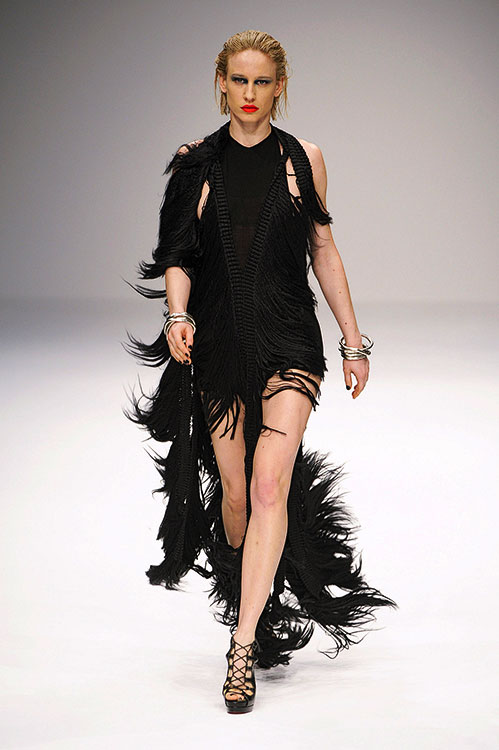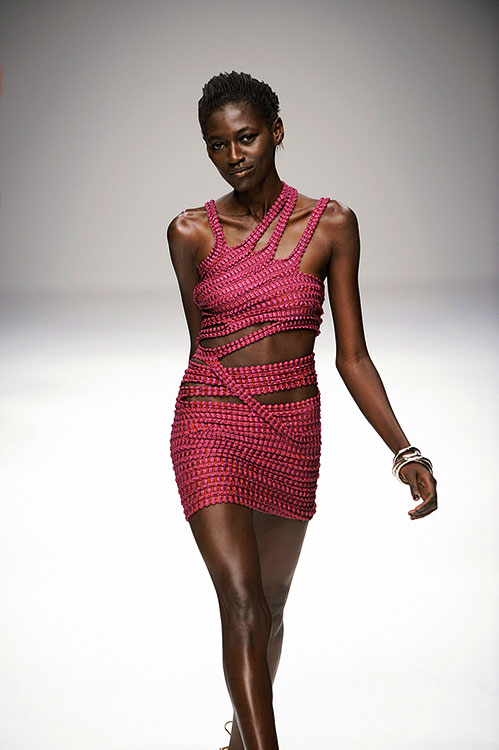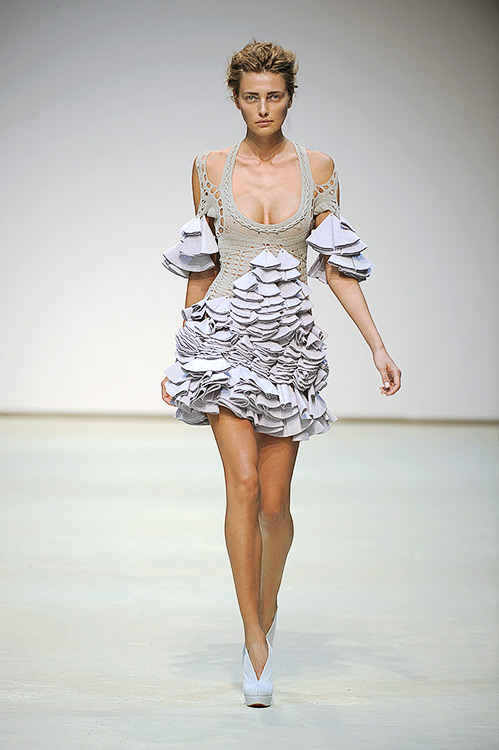Richard Price interviews the acclaimed knitwear designer Mark Fast about contemporary knitting in textiles and fashion




RP: Where did you study, and why did you choose to study there?
MF: I chose to study at Central St. Martins, because a tutor of mine from a fashion college in Canada persuaded me to go. I had never known that St. Martins existed before that. Watching Fashion File in Canada, I began to notice that all of my fashion heroes came from St. Martins. I could hardly wait to get to London. It was a risk and I was uncertain about my future but I knew it was meant to be.
RP: What made you decide to work in knitwear? How do you think it’s different from other parts of fashion?
MF: I am very attracted to textures, architecture and sculpture. The way I work requires the ability to be in control of the whole fabric. I find that knitwear expresses my imagination best. It’s maybe different because a knitwear designer has to design the fabric and silhouette and then inject an emotion of fashion into it to be exciting.
RP: What’s your favourite piece you’ve made? And what inspired it?
MF: I really love my red-fringed dress. The movement in it and the shimmer as it moved down the catwalk was like a dream. It was inspired by exotic birds escaping an oil slick, a message of hope despite the darkness.
RP: Do you think it is important to preserve knitwear as a craft for future generations?
MF: Yes, of course! I think it’s sad that some companies have stopped making domestic knitting machines. These knitting machines are haute couture dream makers. I think hand-done work should always be kept close to the knitter’s heart and passed on. I can’t wait to teach my kids to knit their own party dresses!
RP: How do you see knitwear’s place in fashion developing in the future?
MF: Well, the appreciation for knitwear is at a high. I see a lot of home knitters for example keeping the craft alive as more work is created for them. As we are offered more contemporary versus traditional yarns to experiment with, the possibilities for knitwear in fashion become endless.
RP: Do you think knitting’s image has changed recently?
MF: Definitely, people are getting excited about the way it can stand alone on the catwalk.
RP: If you didn’t do knitwear, what other part of fashion would you work in?
MF: I probably would be making costumes for the cinema but I know this is what I was born to do.
RP: How much of your own feelings and personality do you feel come into your work?
MF: There is always something happening in my life to trigger a mood I want to get out of my work.
RP: If you could travel in time to any event or place, where would you travel to?
MF: I would like to meet Jesus before he was crucified and be there when he rose from the dead.
RP: Is there any particular artist, designer, or actor that you identify with in terms of your work?
MF: Francis Bacon worked in similar way with his paintings as I do with my knitwear.
RP: What does fashion mean to you?
MF: It means rebelling, expressing, and dreaming.
RP: Does this come across in your work, if so how?
MF: It doesn’t necessarily have to in my work, but in my day-to-day life it does.
RP: What methods of knitwear do you use, are you largely a hand knitter? Or a machine knitter? Why do you use the techniques you do?
MF: I use mostly elastomeric yarns and fishnet techniques that are enlarged. I have a great appreciation for hosiery and the technicality involved in making beautiful knitwear.
RP: Which is better, knit, crochet, or machine knit?
MF: I love machine knitting, to see all the needles in front of you and full of life ready to be something rare.
RP: Which of these best describes your work: fashion, art, craft, philosophy, performance (you can choose more than one).
MF: I do believe it’s art in a fashion context.
RP: What message would you like to send out to the members of the Guild?
MF: Keep it real! And keep your cocoon of creativity safe.

